Guppies are freshwater fish that are small and colorful. Their vibrant colors and ease of care are well-known qualities. In-home aquariums, guppies are popular because they breed easily and frequently. Because of their rapid reproduction cycle, they are often used in scientific studies.
Table of Contents
ToggleDo guppies need a bubbler?
Do guppies need a bubbler in a tank?
Guppies do not strictly need a bubbler in their tank, but it can be beneficial under certain conditions. A bubbler increases surface agitation, which is beneficial in tanks with large fish populations or significant waste levels since it helps oxygenate the water.
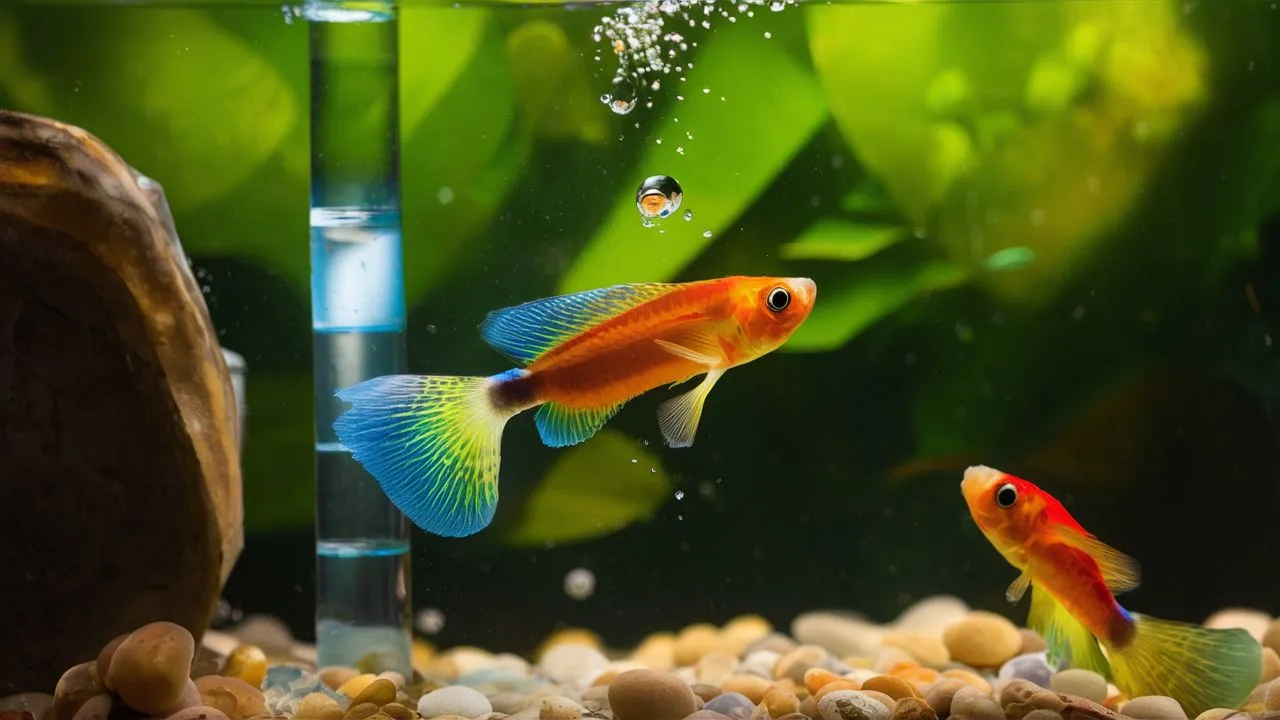
However, the natural oxygenation process in your tank can be sufficient without a bubbler given it has lots of live plants and good filtration.
It’s important to regularly monitor your tank’s condition and seek advice from an experienced aquarist if you’re uncertain.
Are Guppies Afraid of Bubblers?
Guppies are not typically afraid of bubblers. By causing more surface agitation, these devices can help oxygenate the water in a guppy tank by allowing more oxygen to dissolve into the water.
Guppies may be frightened initially by the loudness and movement of a bubbler, especially if they aren’t used to it.
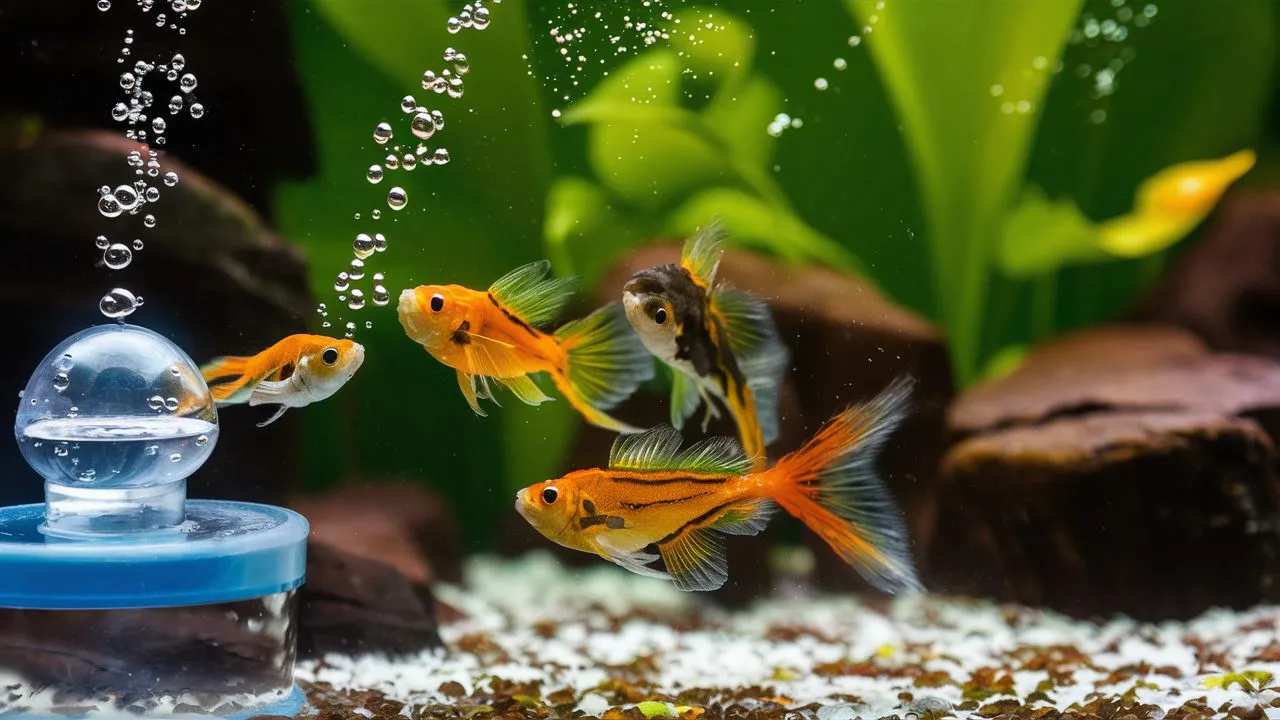
They normally have no problem adjusting to the bubbler’s presence over time. It’s crucial to keep an eye on your guppies behavior when adding any new equipment to their surroundings and make adjustments as needed to guarantee their comfort and health.
What Can You Use Instead of Bubblers?
In an aquarium, oxygenation is crucial for the health of fish like guppies. While bubblers are commonly used to increase oxygen levels in the water
There are several alternatives that can be used:
- Normal Oxygenation: In a well-maintained tank, it may be sufficient to just let the oxygen exchange process occur naturally at the water’s surface.
- Hang On Back (HOB) Filters: These filters don’t require a bubbler because they may agitate the water’s surface to encourage oxygenation.
- Live Plants: During photosynthesis, aquatic plants create oxygen, which raises the tank’s oxygen level.
Normal Oxygenation
The process of oxygen from the air dissolving into the water through the surface is known as natural oxygenation in aquariums. Fish like guppies depend on this exchange for good health.
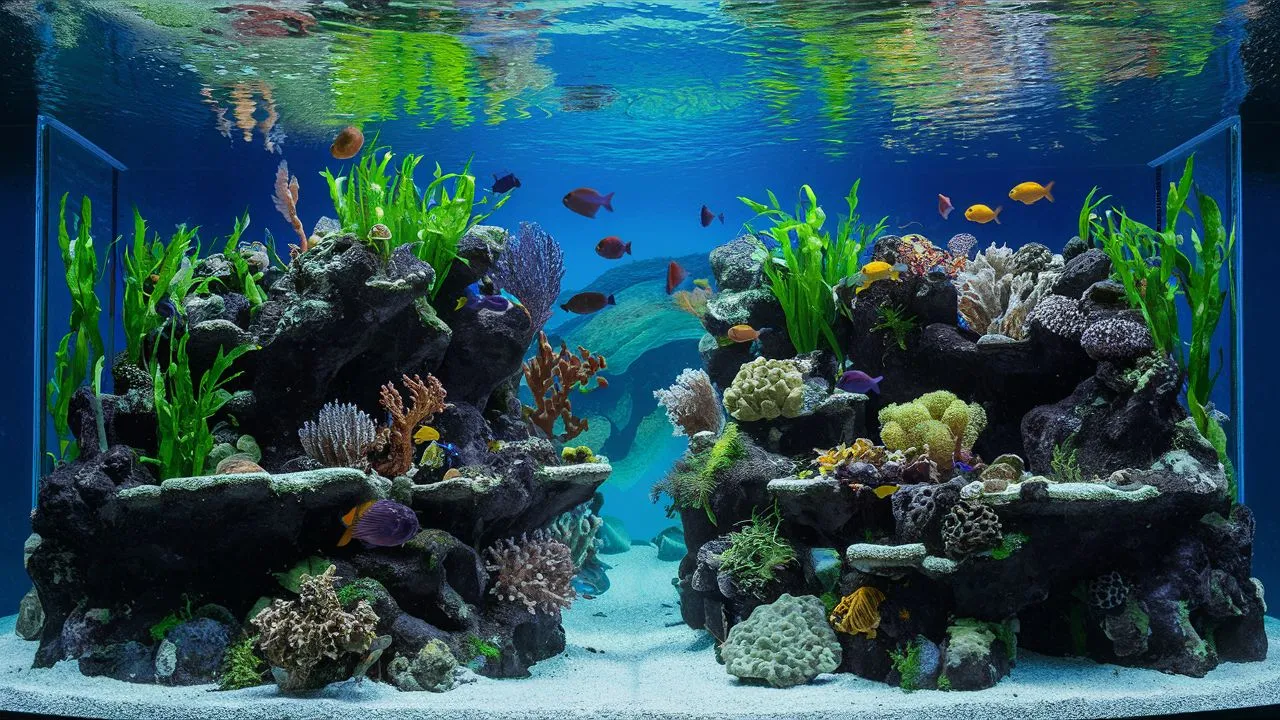
Here’s how it works in detail:
Oxygen Saturation: The amount of oxygen that can be dissolved in the water is known as oxygen saturation. This level can vary based on temperature, pressure, and salinity.
Surface Agitation: Gentle movement at the water’s surface can increase oxygenation. This can be achieved through the normal activity of the fish and water flow from the filter.
Gas Exchange: As fish breathe, they take in oxygen and release carbon dioxide. Natural oxygenation allows for the exchange of these gases at the water’s surface, where carbon dioxide is released into the air and oxygen is absorbed into the water.
Plant photosynthesis: aquatic plants raise oxygen levels. As a result of photosynthesis, they absorb carbon dioxide during the day and release oxygen, further enriching the water with oxygen.
This natural process is typically sufficient for a well-maintained aquarium with a balanced ecosystem. However, in tanks with higher bioloads or less surface agitation, additional methods like bubblers might be necessary to ensure adequate oxygen levels for the fish
Hang On Back (HOB) Filters
Hang On Back (HOB) filters are a popular alternative to bubblers in aquariums, especially for guppy tanks.
Here’s how they work as an oxygenation method:
- Mechanical Filtration: HOB filters employ mechanical filtration to eliminate particles from the water. This is done through physical screens that catch small particles.
- Chemical Filtration: They also use chemical filtration to remove free-floating organic compounds from the water usually with the help of activated charcoal.
- Biological Filtration: Among HOB filters, this is the most important feature. Beneficial microorganisms that convert poisonous ammonia from fish waste into less dangerous compounds like nitrate are fostered to thrive.
HOB filters, designed to increase oxygen levels in water, promote gas exchange, and are suitable for various tank sizes, especially in smaller setups where bubblers may be too large.
Live Plants
Live plants enhance water quality by absorbing nitrates and providing oxygen through photosynthesis, making them an ideal addition to guppy aquariums for their aesthetic appeal.
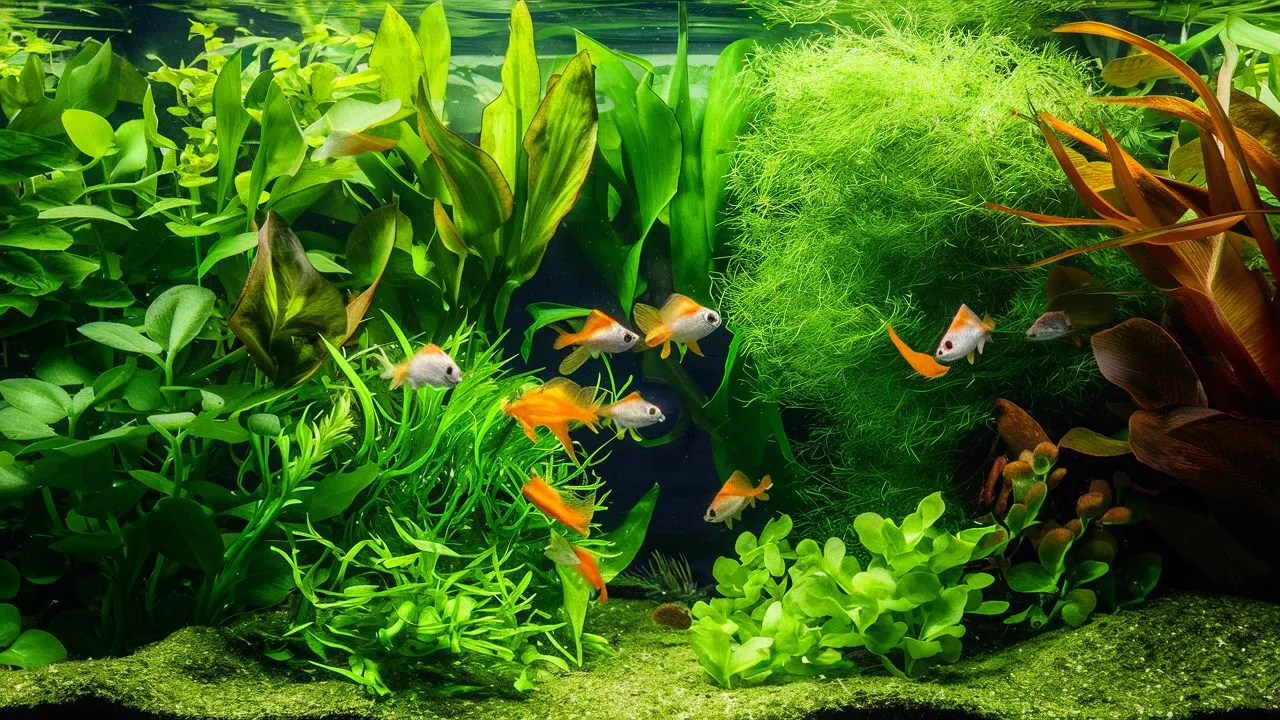
Here are some of the best live plants for guppy tanks:
- Moss Balls: Known as Marimo Moss Balls, these are easy to care for and help clean the water.
- Guppy Grass: Offers protection for fry with its dense leaves and can be rooted or floated.
- Anacharis: Also known as Brazilian Water Weed, it’s effective at converting toxins and can grow tall to provide cover.
- Water Lettuce: A floating plant that helps with water filtration and provides shade.
- Java Fern: A hardy plant that attaches to rocks and wood, requiring minimal light.
- Anubias: Another robust plant that thrives in low-light conditions and doesn’t need much maintenance
These plants not only enhance the beauty of the tank but also create a healthier environment for your guppies to thrive in.
Are There Any Natural Alternatives to Bubblers?
Yes, there are natural alternatives to bubblers that can help oxygenate the water in an aquarium.
Live plants produce oxygen through photosynthesis, while surface agitation adjusts water flow from filters or spray bars. Sponge filters provide mechanical and biological filtration, creating water movement for oxygenation.
Powerheads create water currents, improving oxygen levels in the tank. These methods maintain a healthy oxygen balance, providing a good environment for guppies and other fish.
How Bubblers Work in Guppies Tank?
Aquarium bubblers, also known as air stones, are essential devices in fish tanks to help oxygenate the water.
They consist of an air pump outside the aquarium, an airline tubing connected to the bubbler inside the tank, and a porous stone.
When the air pump is turned on, it pushes air through the tubing and out of the stone, creating bubbles that rise to the water’s surface, creating agitation and increasing gas exchange.
This agitation allows more oxygen to dissolve into the water, ensuring even oxygenation throughout the tank. While not always necessary, bubblers can be beneficial in tanks with limited water movement or high fish populations.
Conclusion
Guppies don’t need a bubbler in their tank, but having one can be beneficial in high fish populations or limited water movement. Bubblers enhance oxygenation by creating surface agitation, which is essential for fish health. However, well-maintained tanks with good filtration and live plants can provide sufficient oxygenation, making a bubbler optional. The choice should be based on the aquarium’s specific needs.
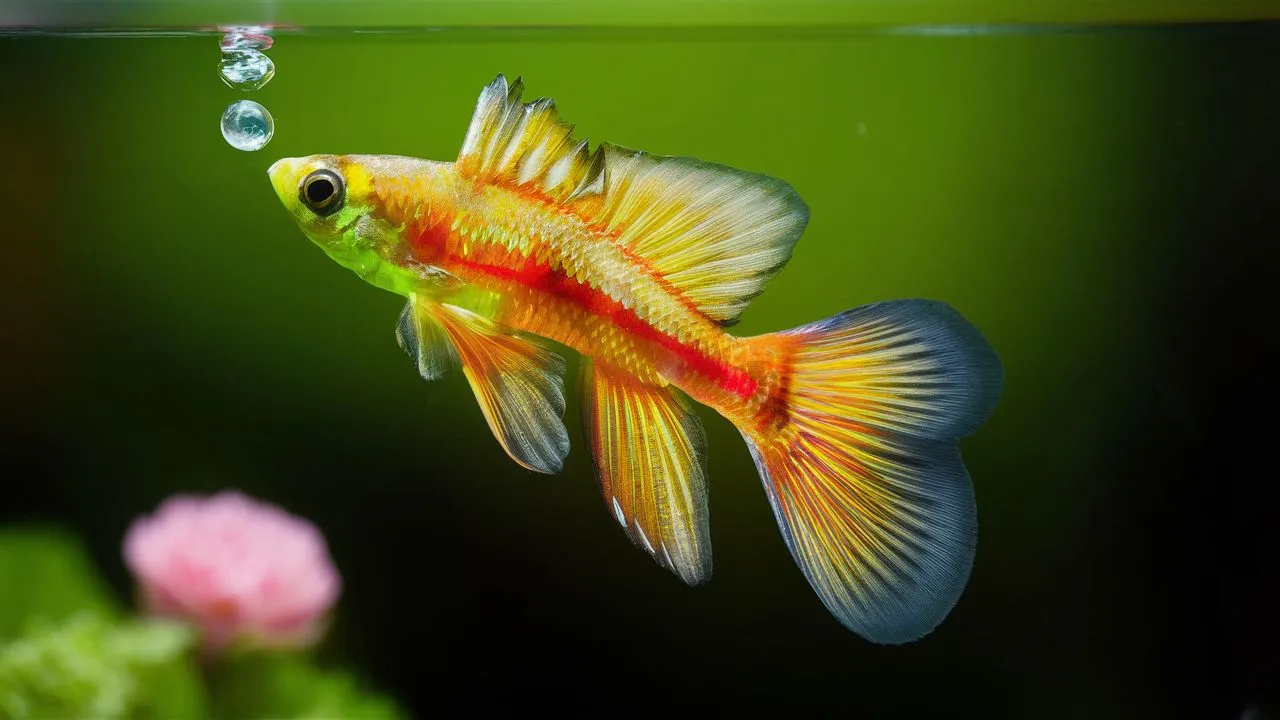
2 thoughts on “Do guppies need a bubbler?”